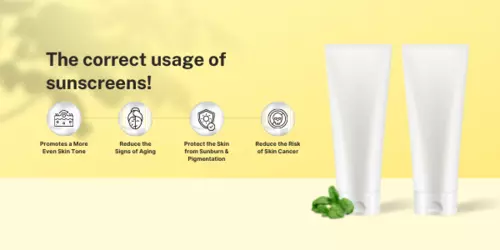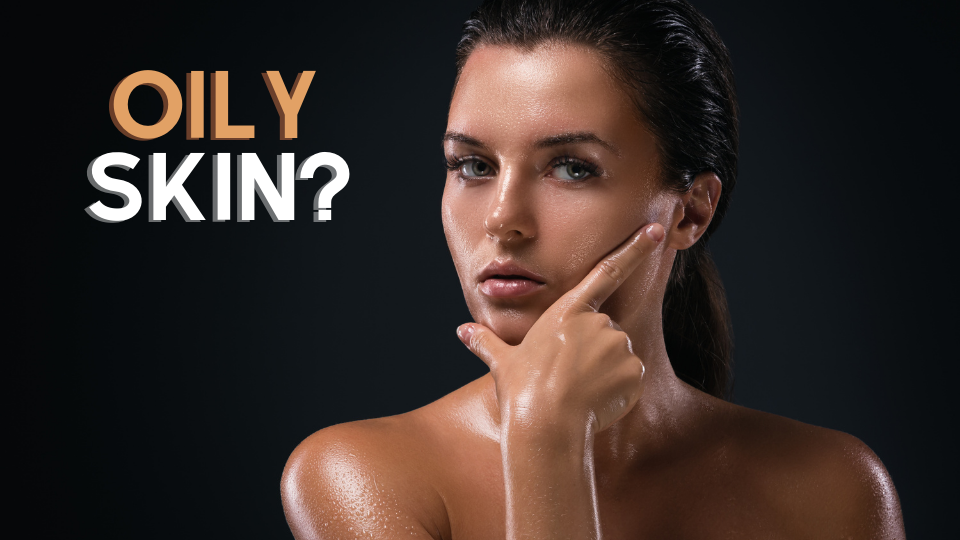The correct usage of sunscreens: All you need to know for Indian skin
.png)
The most basic skin care advice that almost all dermatologists provide is that you must always wear sunscreen. Why is it so important? Its important because sun exposure can not only lead to signs of aging, pigmentation, damage to skin and sunburns, but also be a catalyst to a fatal condition like skin cancer. It is extremely important that you meet a certified dermatologist in case you notice any lesions on your skin that are changing in size or color.
Firstly, let us understand what the sunscreen is screening (shielding) us from. One of the components of sunlight is ultraviolet light. This is the light that has a lower wavelength than the visual range and hence we cannot see it. UV light is of two types, UVA & UVB. We need protection and shielding from both, which is why we need a screen from the sun. When a sunscreen can protect you from both UVA & UVB rays, it is known as a broad-spectrum sunscreen.
What happens when we are not protected from UV rays?
There are certain broad changes that occur due to repeated exposure:
1) Sunburn & Pigmentation: Depending on your skin tone, you are more likely to get one of the two. Lighter skin tones tend to get sunburns. Darker skin tones, which have more melanin, also have higher ability to naturally produce more pigment and they hence tend to show pigmentation. Pigmentation caused by UVA tends to be more permanent in nature than the immediately protective pigmentation that occurs against UVB rays.
Sunburns are often painful and cause discomfort. Pigmentation leads to unwanted cosmetic changes in the skin. A good sunscreen helps us avoid both.
2) Early signs of Aging: Repeated sun exposure without protection can also lead to damage to the connective tissue in the skin, which are elastin and collagen. It also damages skin cells. This damage can be seen in the form of changes relating to aging of the skin. Wrinkles, fine lines and a leathery appearance of the skin can be prevented with the regular use of sunscreen.
Further reading: Options for Anti-aging treatments
3) Skin Discoloration: commonly known as sun spots, age spots or liver spots, these are brownish in color and can appear in the face, arms, hands etc. Although they can be improved with certain treatments such as the photofacial, its best to avoid such discoloration with the regular use of a good sunscreen
4) Skin cancer: Various studies have shown the linkage between increased sun exposure and the risk of cancer. Skin cancer tends to occur on exposed areas of the skin. This is believed to occur due to the DNA damage that UV rays can cause over the long term.
What SPF and type of sunscreen should I be using?
Dermatologists recommend that you use a minimum of 30SPF and a broad spectrum (both UVA & UVB protective) sunscreen. This is good enough in case you do not have too much outdoor work. If you do, then 50-60 SPF should be preferred. In any case, a higher SPF does not harm and may be better in the Indian context because we often use lesser quantity than is actually required.
You can also choose your sunscreen based on your skin type and go for a moisturizing sunscreen if you have dry skin and a matte finish/dry touch sunscreen if you have oily skin.
In terms of application, you can look at spray sunscreens for the body to increase coverage.
How much sunscreen should be applied?
For just the face, you require 0.04 ounces of sunscreen. To understand easily, this should be equivalent to taking a dollop of sunscreen the size of a 2 Rupee coin on your palm.
If you want to apply the sunscreen over the full body, take 1 ounce, which is equivalent to your entire palm being covered with sunscreen. You can also use a spray for the body, but make sure that you have complete coverage of exposed areas in either case. Sunscreen should ideally be re-applied every 2 hours.
In terms of your skin care routine, there is no specific sequence that must be followed for layering your sunscreen. You can stick to using it first in case that makes it easy for you. In case of any queries or doubts that you using the correct sunscreen, the correct SPF and applying properly, you should contact your dermatologist.
Related Reading: How to select the right dermatologist





